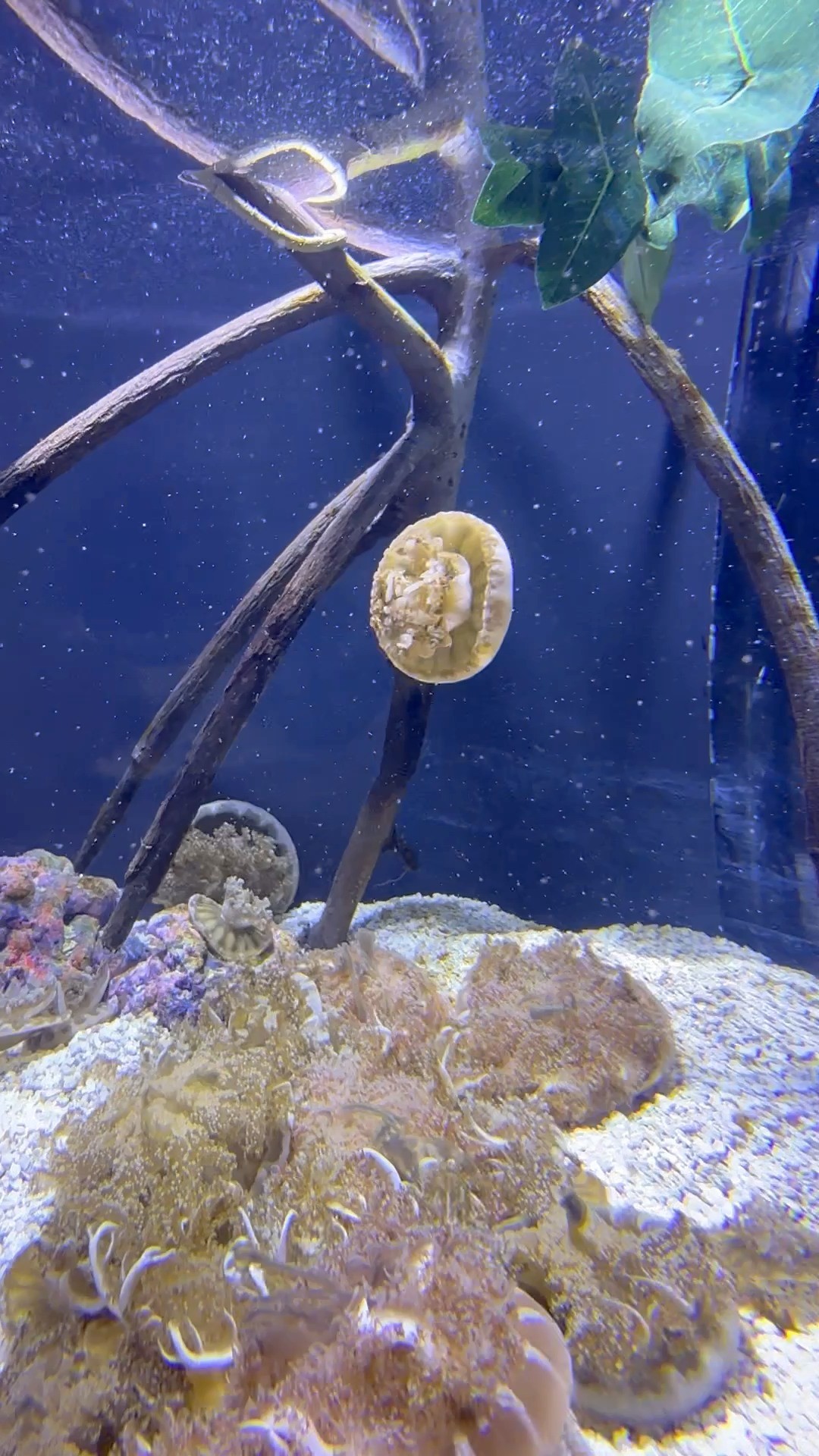- The characteristics of the upside-down jellyfish and its distinctive habits
- The symbiotic relationship between upside-down jellyfish and algae
- The adaptation mechanisms of the upside-down jellyfish for survival
- The ecological roles and conservation status of the upside-down jellyfish
- Human applications and cultural significance of the upside-down jellyfish
Jellyfish have fascinated marine biologists and nature enthusiasts for decades, given their unique physiological structures and lifestyles. Among them, the upside-down jellyfish, scientifically known as Cassiopea, stands out due to its atypical behavior and symbiotic relationships. Unlike most jellyfish that float freely, these jellyfish spend most of their time living on the ocean floor. This intriguing behavior opens the gateway to understanding its distinct mode of existence in aquatic ecosystems.
Firstly, one of the most notable features of the upside-down jellyfish is how it lays on the seafloor with its bell facing down and tentacles reaching upward. This inverted position allows the jellyfish to maximize exposure to sunlight, which is vital for a crucial relationship it forms with symbiotic algae called zooxanthellae. These algae reside in the jellyfish’s tissues and perform photosynthesis, producing nutrients that benefit both organisms. This behavior is a remarkable example of mutualism in marine life, where the jellyfish provides a habitat, and the algae, in return, help produce food through sunlight, pointing to Option B: They live on the ocean floor and use sunlight to make food.
Moreover, the upside-down jellyfish exhibits fascinating adaptation strategies. Unlike their free-swimming counterparts, they have a more limited mobility. This adaptation is complemented by their capability to filter-feed, capturing plankton and organic particles in the water. Their bell pulsations create water currents that enhance feeding efficiency, demonstrating an evolution towards optimizing survival in a benthic lifestyle. This mode of feeding extends our understanding of diversification in jellyfish and highlights their ecological versatility.
Despite their simple appearance, upside-down jellyfish have a complex ecological role. They contribute to nutrient cycling within their habitats and have a substantial impact on the primary productivity of the waters they inhabit due to their symbiotic algae. The presence of these jellyfish also serves as a biological indicator of ecosystem health. Understanding their ecology is crucial for conservation efforts, as these jellyfish are sensitive to changes in water quality and temperature, making them susceptible to habitat degradation.
In conservation terms, these jellyfish face challenges due to coastal development, pollution, and climate change. Protecting their habitats ensures the continuation of their ecological functions and the delicate balance they help sustain in marine environments. Educational campaigns that highlight the significance of preserving marine biodiversity can engage local communities and stakeholders, promoting sustainable practices and policies that benefit marine life.
Beyond their ecological importance, upside-down jellyfish have historical and cultural significance. In some cultures, jellyfish are harvested for culinary purposes, and their unique characteristics inspire art, literature, and scientific curiosity. Advances in marine biotechnology also leverage jellyfish properties for research in biomedicine, providing insights into cellular regeneration and biofluorescence. These applications underline the diverse ways in which jellyfish can influence human knowledge and innovation.
Upside-down jellyfish exemplify the remarkable intricacies of marine life. They defy conventional notions of jellyfish behavior through their symbiotic relationships and benthic lifestyles. As crucial participants in their ecosystems, their conservation is vital. Through understanding their biology and interactions, we glean broader insights into marine environments, empowering efforts to protect these delicate aquatic systems. The upside-down jellyfish represents a critical piece of the puzzle in the vast tapestry of ocean life, reminding us of the astonishing diversity and interconnectedness present within our natural world.
*****
Source Description
It’s
What unique feature sets upside-down jellyfish apart from other jellyfish?
A) They glow in the dark
B) They live on the ocean floor and use sunlight to make food
C) They have a tentacle that can regenerate
D) They can swim at high speeds
Drop your answer in the comments! ⬇️


